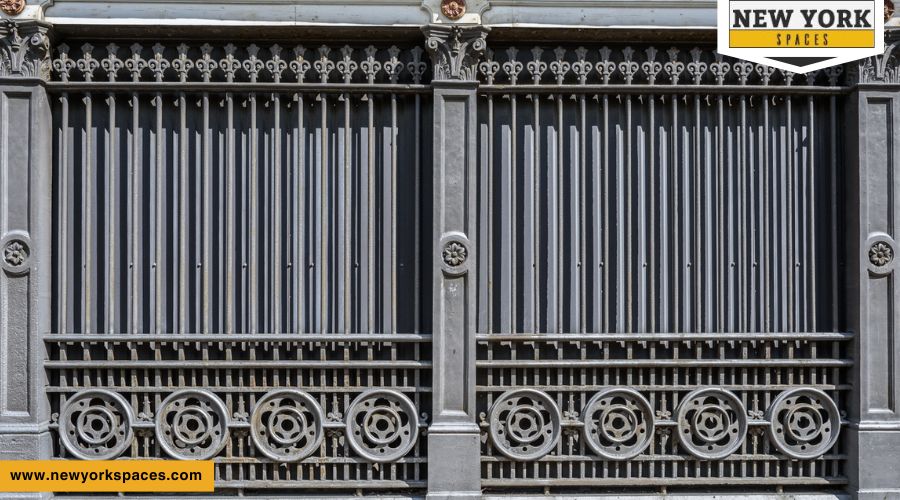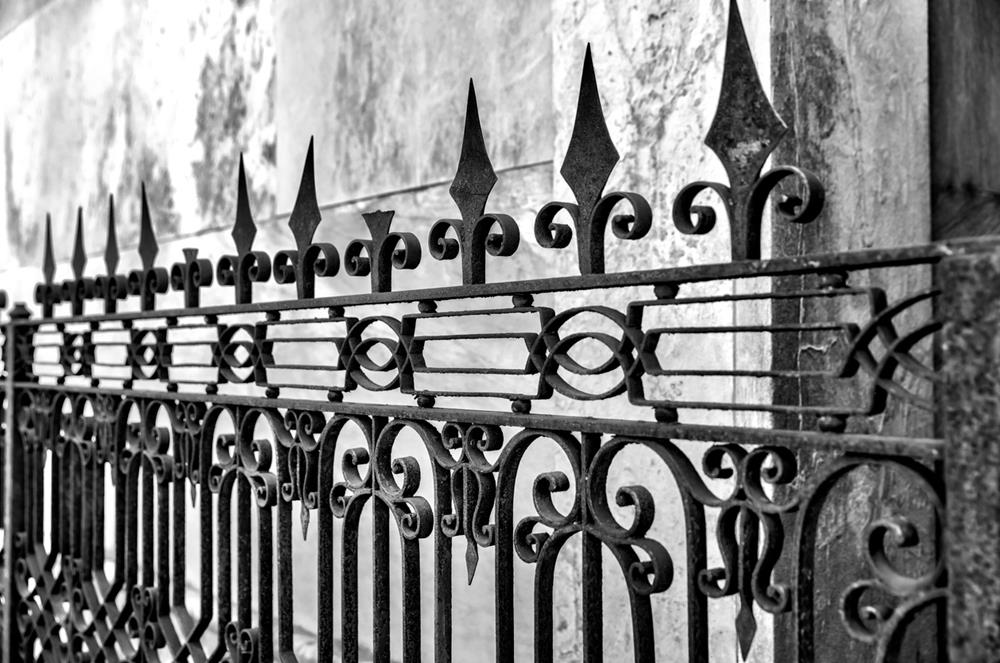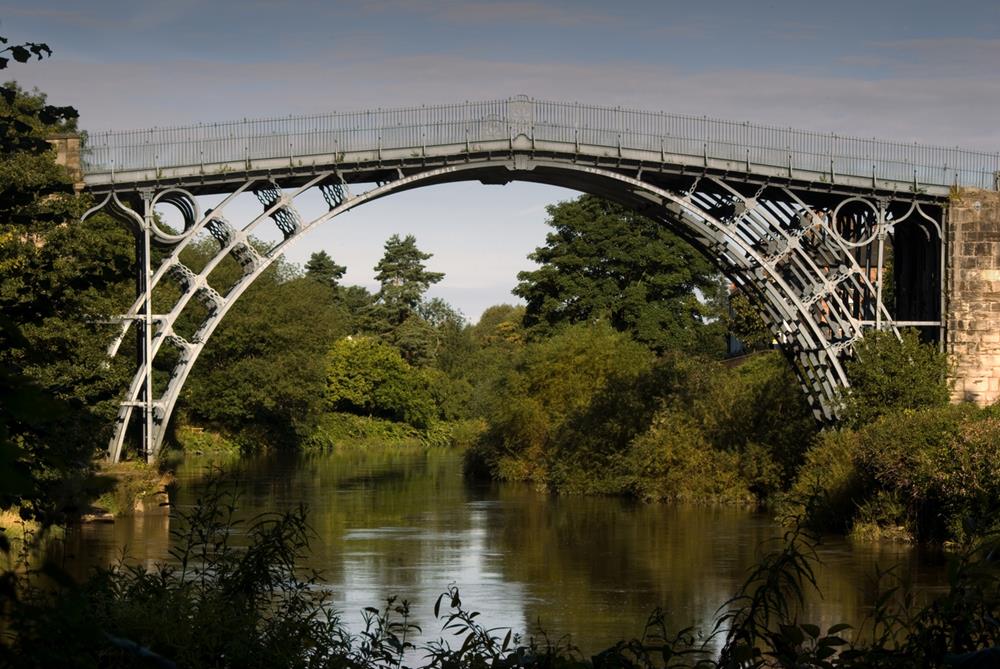Cast iron, a material that played a pivotal role during the Industrial Revolution, became a cornerstone in the construction of buildings, bridges, and various other structures. Its rise to prominence in the architectural world was not merely a matter of chance but a result of its unique properties and the technological advancements of the time. This blog post delves into the reasons behind the widespread use of cast iron in buildings, exploring its historical context, material advantages, architectural impact, and eventual decline.
Historical Context and Technological Advancements
The adoption of cast iron in the construction industry during the 18th and particularly throughout the 19th century marks a pivotal chapter in the annals of architectural and engineering history. This era, defined by the sweeping changes of the Industrial Revolution, transformed societies, economies, and industries worldwide. Among the myriad of innovations that characterized this period, the advancements in the production and use of cast iron for building purposes stand out for their lasting impact on construction and architectural design.
The Dawn of the Industrial Age
The Industrial Revolution, commencing in the late 18th century, was a period of great technological, socioeconomic, and cultural change. Initially taking root in Great Britain, the revolution gradually spread across Europe and North America. It was characterized by the transition from hand production methods to machines, the rise of factory systems, and the widespread use of steam power and later, electricity.
Breakthroughs in Cast Iron Production
Central to this transformation was the evolution of iron making techniques. Traditionally, iron was produced in small quantities using charcoal in blast furnaces. However, the introduction of coke as a fuel revolutionized iron production. Coke, made from coal, offered a more efficient and less expensive alternative to charcoal, which was becoming increasingly scarce due to deforestation.
The use of coke-fueled blast furnaces led to the development of new smelting techniques that significantly increased the efficiency and scale of iron production. One such method was the “puddling” process, invented by Henry Cort in the late 18th century, which allowed for the production of wrought iron in greater quantities and of higher quality. However, it was the ability to produce cast iron – iron that is melted and then poured into molds to solidify – that truly transformed the construction industry.
Cast Iron – A Building Revolution
The ability to mass-produce cast iron had profound implications for building and construction. For the first time, it was possible to create large, prefabricated iron components that could be easily transported and assembled on-site. This not only reduced the time and labor required for construction but also allowed for the creation of structures that were previously unimaginable in scale and design.
The architectural landscape of cities began to change dramatically. Cast iron was used to construct bridges, factories, warehouses, and office buildings, many of which featured large, open interiors free from the forest of supporting columns typical in masonry buildings. The material’s versatility also extended to decorative elements, with cast iron being used to create intricate facades, railings, and ornamental details that added a new dimension of beauty to the industrial age’s utilitarian ethos.
Economic Impacts and Wider Adoption
The economic advantages of cast iron were equally significant. Its mass production reduced costs, making it an attractive option for builders and developers during a time of rapid urbanization and industrial expansion. Cities vying to showcase their prosperity and modernity eagerly embraced cast iron for its blend of practicality and aesthetic appeal.
Moreover, the global trade networks established during the Industrial Revolution facilitated the export of cast iron technology and materials, spreading its use to the United States, Europe, and beyond. Iconic structures like the Eiffel Tower in Paris and the Crystal Palace in London stand as testaments to the material’s versatility and the era’s engineering ingenuity.
Material Advantages of Cast Iron in Construction
The widespread adoption of cast iron in the construction industry during the 18th and 19th centuries was not a mere coincidence but a result of its distinct material advantages. These advantages not only revolutionized the way buildings were constructed but also influenced architectural styles and urban planning. Let’s delve deeper into the key benefits of cast iron: its strength and durability, versatility in design, and fire resistance.
- Strength and Durability: Cast iron’s exceptional strength, particularly in withstanding compressive forces, made it a cornerstone material for the construction of enduring structures. Its robustness stems from its high carbon content, which gives cast iron its characteristic hardness and compression resistance. This property was instrumental in the construction of buildings that could bear the weight of heavy machinery, vast crowds, or the additional floors that became common in urban developments.
The durability of cast iron also meant that structures could withstand the test of time and the elements, resisting the wear and tear that erodes less sturdy materials. Bridges spanning wide rivers, towering buildings, and expansive glasshouses relied on cast iron frameworks to maintain their structural integrity under significant loads and stresses. The material’s resilience against deformation or failure under heavy loads made it a reliable choice for critical structural applications, from the skeletal frameworks of industrial buildings to the ornate supports of Victorian-era conservatories.
- Versatility in Design: Beyond its structural capabilities, cast iron offered an unprecedented versatility in architectural design. The advent of cast iron allowed for the production of components in a multitude of shapes and sizes, a feat unattainable with stone or wood without extensive labor. This malleability underpinned the exploration of new architectural styles, enabling the creation of intricate and ornate designs that would have been difficult, if not impossible, to achieve with more traditional materials.
Architects and engineers harnessed this versatility to push the boundaries of design, creating elaborate decorative elements such as columns with intricate capitals, ornate balustrades, and detailed facades that combined aesthetic appeal with structural functionality. This ability to customize and embellish buildings led to a distinctive architectural aesthetic that could signify wealth, innovation, or the cultural aspirations of an era or institution.
- Fire Resistance: In the densely packed urban landscapes of the 18th and 19th centuries, where fire was a pervasive hazard, cast iron’s inherent fire resistance offered a compelling advantage over more flammable building materials like wood. Unlike wood, which could easily ignite and contribute to the spread of fire, or stone, which could crack and collapse under intense heat, cast iron maintained its structural integrity even in high-temperature scenarios.
This fire-resistant property made cast iron an attractive option for urban buildings, where the risk of fire was magnified by close-quarters living and the use of open flames for light and heat. As cities grew and the demand for safer construction materials increased, cast iron became a material of choice for building in fire-prone areas, contributing to the safety and resilience of burgeoning urban centers.
Architectural Impact
This period witnessed a significant departure from traditional construction methods, driven by the unique properties of cast iron. Its influence is evident in the evolution of architectural design, the transformation of interior spaces, and the embellishment of building exteriors.
Revolutionizing Architectural Design
The introduction of cast iron as a structural material represented a seismic shift in architectural possibilities. For centuries, the design and construction of buildings were constrained by the limitations of stone, brick, and wood. These materials required thick walls and numerous support columns to bear heavy loads, which in turn restricted the size and configuration of interior spaces.
Pioneering the Skyscraper
Perhaps the most enduring legacy of cast iron in architecture is its role in the development of the skyscraper. By the late 19th century, cities were facing the challenge of accommodating growing populations and businesses in limited urban spaces. The solution was to build upwards. Cast iron, and later steel which built upon the principles established by cast iron construction, provided the means to do so.
Enriching Architectural Aesthetics
Beyond its structural advantages, cast iron offered an unparalleled medium for architectural expression. Its capacity to be cast into intricate shapes and ornate designs enabled architects to create buildings of stunning complexity and beauty. From the filigree ironwork of balconies and railings to the grandeur of cast iron facades, the material provided a canvas for creativity and innovation.
This decorative versatility was particularly influential in the Victorian era, where architectural design was characterized by a penchant for ornamentation and detail. Cast iron allowed for the mass production of decorative elements, making elaborate designs more accessible and affordable. The use of cast iron in architectural embellishments contributed to the rich tapestry of styles that define the period, from Gothic Revival to Art Nouveau.
Economic Considerations
The adoption of cast iron in construction during the 18th and 19th centuries not only revolutionized architectural design and engineering practices but also brought about significant economic advantages. These benefits stemmed from various aspects of cast iron production and utilization, including its manufacturing process, the efficiency of assembly, and the overall impact on construction timelines and labor costs.
- Streamlining Production: The shift towards cast iron as a preferred building material was underpinned by the industrialization of its production process. Unlike the labor-intensive and time-consuming methods required to quarry and shape stone or manufacture bricks, cast iron components could be mass-produced in foundries. This industrial production was facilitated by advancements in smelting technology, which allowed iron to be melted and poured into molds, creating uniform structural elements and decorative features with relative ease.
- Enhancing Construction Efficiency: Beyond the production phase, cast iron offered economic benefits in the construction process itself. The prefabricated nature of cast iron components meant that they could be quickly assembled on-site, significantly reducing the time required to erect a structure. This rapid assembly was a departure from the lengthy construction timelines associated with traditional masonry and timber buildings, where each element had to be individually crafted and placed.
- Reducing Overall Construction Costs: The economic implications of these efficiencies were profound. Lower material costs, combined with reduced labor expenses and shorter construction timelines, made cast iron structures financially viable for a wide range of projects. This affordability facilitated the rapid expansion of urban infrastructure, including commercial buildings, factories, bridges, and public buildings, contributing to the growth and development of cities during the Industrial Revolution.
Decline and Legacy
The decline in the use of cast iron for construction towards the late 19th century marked a significant shift in architectural and engineering practices, giving way to new materials and technologies. Despite this transition, the legacy of cast iron in the architectural realm continues to be profound, reflecting not only the material’s inherent qualities but also the innovative spirit of an era.
Transition to Steel
The turn of the 20th century brought with it the advent of steel, a material that possessed several superior properties compared to cast iron. Steel’s higher tensile strength, greater flexibility, and enhanced resistance to corrosion made it better suited to the evolving demands of modern construction. The development of the Bessemer process and later, the open hearth process, made steel production more efficient and cost-effective, facilitating its adoption as the preferred material for structural frameworks.
Steel allowed for even taller buildings and longer bridge spans, pushing the boundaries of architectural design further than cast iron could. Its ability to withstand tensile stresses made it particularly suitable for the burgeoning skyscraper construction, embodying the aspirations of the new century.
The Enduring Legacy of Cast Iron
Despite the shift towards steel, the influence of cast iron in the architectural world remains indelible. The 19th century saw a proliferation of cast iron structures, from the majestic bridges spanning the great rivers of industrial cities to the ornate facades of commercial buildings that lined the bustling streets. Many of these structures are still standing today, a testament to the durability of cast iron and the skill of those who worked with it.
These surviving structures serve as tangible links to the past, offering insights into the technological and aesthetic aspirations of the Industrial Revolution. The preservation and restoration of cast iron buildings and bridges have become a priority in many parts of the world, recognized not only for their historical value but also for their unique contribution to the urban landscape.
Cast Iron in Architectural Heritage
Cast iron’s architectural legacy is also evident in its influence on design and construction principles. The material’s capacity for mass production and prefabrication anticipated modern construction techniques, where efficiency and scalability are paramount. The ornamental possibilities of cast iron also expanded the vocabulary of architectural expression, paving the way for subsequent innovations in building aesthetics.
Moreover, the use of cast iron played a crucial role in the development of urban infrastructure, supporting the growth of cities and the expansion of public spaces. Its role in the construction of market halls, train stations, and public buildings facilitated the social and economic transformations of the time.
Conclusion
The era of cast iron in construction, a hallmark of the Industrial Revolution, marked a transformative period in architectural history, distinguished by its robust strength, design versatility, and fire resistance. These characteristics made cast iron an essential material for architects and builders, enabling the creation of structures that were both structurally innovative and aesthetically rich. While newer materials like steel have since come to the forefront, the legacy of cast iron endures in the historic edifices that still stand as testaments to that era’s ingenuity. This legacy continues to influence modern architecture, serving as a reminder of the enduring impact of technological and aesthetic innovation in shaping our built environment.




